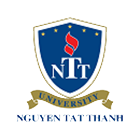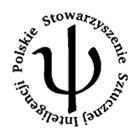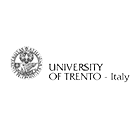Exhibits & Demonstrations
Exhibits from sponsors
Keysight
National Instruments
Demonstrations
Field Trial of Citizens Broadband Radio Service (CBRS)/Spectrum Access System (SAS)
ISMO: IoT Spectrum Monitor
5G enablers for cognitive radio, organised by the CELTIC+/SHARING project
An SDR-based prototype of spectrally precoded OFDM
WiFi-Based Platform for Energy Saving in Wireless Networks
New Multicarrier Waveforms for Broadband Professional Mobile Radio
Spectrum Utilization and Reconfiguration Cost Comparison of Various Decision Making Policies for Opportunistic Spectrum Access Using Real Radio Signals
License Shared Access Pilot in Italy
Real Time 5G Beamforming Measurement
Real Time 5G Beamforming Measurement with M9703A Digitizer, M8195A AWG, SystemVue W1462 FPGA Architect and W1906 5G Library
Key technical test challenges and performance points:
- Time alignment and frequency response calibration with user programmable FIR filter on each channel
- Integrated algorithm development flow in SystemVue from system simulation, to hardware simulation and deployment into digitizer FPGA supporting custom analysis for emerging waveforms
- Real time demodulation and beam weight calculations in M9703A FPGA
- Advanced beamforming and analysis post processing using 5G reference algorithmic library.
5G Waveform Generation and Analysis Testbed, Reference Solution
This configuration is designed to extend the base configuration for RF modulation bandwidths up to 2 GHz and frequency bands between 60 GHz and 90 GHz. It provides trusted reference algorithmic modeling IP and a new, innovative simulation methodology that can be added to the SystemVue software platform. Reference models support various 5G candidate waveforms for both orthogonal and non-orthogonal types of multi-carrier communications systems including multi-antenna and beamforming signal processing techniques. Also, 3D visualization helps to identify and address problem areas that improve system performance at an early stage of design.
Key technical test challenges and performance points:
- Supports many topologies for Software Defined Radio transmitter / receiver testing (IQ, IF, RF, microwave, millimeter-wave)
- Advanced reference baseband modeling IP supporting various 5G candidate waveform technologies
- Scalable modulation bandwidths and frequency bands
- Multi-antenna system architectures
- Modified 3GPP 3D channel model supporting mmWave channel characteristics
- Multi-channel RF behavioral model
- Independent reference to debug and validate hardware performance
Channel emulation solutions
Channel emulation solutions Propsim® radio channel emulators simulate the characteristics of real-world radio channel conditions within a laboratory, enabling development and testing of high quality wireless equipment. channel emulators are versatile and easy-to-use in a wide range of applications with the aim of improving the quality of wireless devices and enhancing the end-user experience. Anite's Propsim® channel emulators are utilised throughout the world by leading operators, mobile device developers, chipset vendors, base station manufacturers, test houses, research labs and the defence industry.
Key technical test challenges and performance points:
Propsim® products emulate radio channel characteristics
- path loss,
- multi-path fading,
- delay spread,
- Doppler spread,
- polarization,
- correlation and spatial parameters critical for MIMO and multi-radio system performance.
About the author
Hervé OUDIN, is 5G program manager for EMEAI and looking after collaborative and bilateral 5G research and partnership program, 5G consortia as well as outbound marketing activities such as 5G value proposition, dedicated 5G Go To Market strategy and 5G trade shows.
Hervé is 20+ years of experience in the wireless industry and spanning various roles in Engineering and Marketing and crosses the evolution from analog cellular radio such as R2000 and NMT through LTE and beyond. This started with 1G and I have been part of every cellular generation since.
Prior his current role, Hervé spent the previous 15+ years in Wireless R&D and Conformance test with specific focus on Protocol layers and RF conformance testing and from Engineering to Product Management and as EMEA Business development Manager delivering wireless system simulator and RF conformance testing expertise to all major design and certification labs as well as manufacturing facilities across EMEA.
National Instruments is collaborating with top researchers focused on wireless research, specifically 5G wireless communications. The graphical system design approach combines LabVIEW Communications System Design software with the software defined radio (SDR) platform to help researchers innovate faster.
802.11 and LTE Coexistence
- Real-time over-the-air testbed for LAA and LTE-U
- Listen-Before-Talk Category 4 and Discontinuous Transmission run-time configurable
- Open architecture for coexistence research in LabVIEW Communications
USRP RIO LTE App
Samsung and NI has been collaborating on the one of key technologies for 5G communications named Full-Dimensional Multiple-Input, Multiple-Output (FD-MIMO). Samsung developed the eNodeB (or base station) and NI developed the handset. For this purpose, we used LabVIEW Communications System Design Suite and LTE Application Framework. In this demo, features of LV Communications and LTE App. Framework is shown and also over-the-air (OTA) communications between the two USRP RIOs. New USRP RIOs with 120MHz bandwidth will be introduced too.
LabVIEW Comms
Researchers and scientists are racing to deliver solutions that can keep pace with the demands for improved connectivity. This rising pressure to prototype in hardware is compelling designers to invent new algorithms to transform ideas into concrete solutions. Unfortunately, the tools available today fetter innovation with their disjointed paths from concept to real-world signal. LabVIEW Communications remedies this by providing a design environment closely integrated with NI software defined radio (SDR) hardware to enable rapid prototyping communications systems. From host-based USRP prototypes to more demanding host- and FPGA-based USRP RIO and FlexRIO systems, designers can rely on LabVIEW Communications to offer a scalable, unified path to connect their algorithms to real-world signals. Innovate faster with LabVIEW Communications.
Frequency Hopping Radio with the NI USRP-2901
Observe a basic frequency hopping cognitive radio with built in analytics, using the NI USRP 2901 and LabVIEW Communications System Design Software. The USRP-2901 transceivers provide relevant, hands-on laboratory learning in RF and communications as part of an affordable teaching solution. NI leverages the power of LabVIEW software and innovative hardware to deliver these affordable software defined radio (SDR) transceivers for accessible communications experimentation in multiple frequency bands.
Field Trial of Citizens Broadband Radio Service (CBRS)/Spectrum Access System (SAS)
Pekka Aho
VTT Technical Research Centre of Finland
Abstract
This demonstration presents a field trial of the latest US spectrum sharing concept for mobile broadband. The proposed demonstration is part of the Finnish spectrum sharing trial continuum that started in 2013 with the World’s first Licensed Shared Access (LSA) trial. The demonstration is now expanded towards the US three-tier Citizens Broadband Radio Service (CBRS) model for 3.5 GHz band that introduces an additional more dynamic sharing layer in addition to the two layers available in the LSA model. The trial is implemented based on the Federal Communications Commission (FCC’s) definitions and Wireless Innovation Forum (WInnF) Spectrum Sharing Committee’s recommendations. The trial consists of commercial LTE network components like base stations, user equipment, network management system, and core network. Additional spectrum sharing specific components are developed on top of the LTE system including Domain Proxy and advanced algorithms for Spectrum Access System (SAS) to enable frequency allocation for the CBSDs. Both the standalone and operator driven CBSDs are considered. Our trial gives a unique opportunity to see live how a commercial LTE network adapts to the SAS frequency allocation. Furthermore, performance and latency measurements (e.g. evacuation time) are performed based on the real life behaviour of the network.
Authors
TBC
Demonstration is presented by Finnish industry and academic trial consortium from Cognitive Radio Trial Environment (CORE++) project (https://core.willab.fi/) coordinated by Pekka Aho, [email protected], VTT Technical Research Centre of Finland Ltd., Kaitoväylä 1, FI-90571 Oulu, Finland.
ISMO: IoT Spectrum Monitor
M. Dumay, G. Madhusudan, J. Schwoerer
Orange Labs, F-38240 MEYLAN
Abstract
Most of the wireless technologies dedicated to the Internet of Things operate on shared license-free bands. Consequently, different technologies and services have to co-exist on the same band with other services and technology, without any coordination or prior knowledge of their spectral neighbourhood. Due to this lack of knowledge, it is extremely complicated for an operator to perform any kind of spectrum usage optimization, even if it would have benefit to everyone.
ISMo is a spectral probe designed especially to perform an accurate monitoring of the usage of license-free bands (ISM and SRD) at a given place, thanks to continuous band activities analysis, radio events detection and classification. The provided data can then been used to optimize spectrum usage in way that maximize inter-system coexistence, for the benefit of every systems.
In this demonstration, we show how this simple implementation is able to provide a good understanding on the 868 MHz band status.
Authors
Marion Dumay* is a Research Engineer at Orange Labs in Grenoble. She graduated in Computer Science from the Université de Technologie de Compiègne in 2008, then she spent two years as a network engineer in Orange Business Services, where her interests for wireless networks grew. She carried out a doctoral thesis on QoS for wireless sensor networks, and obtained her Ph.D. degree from the Université de Technologie de Compiègne in 2013. Her research interests are wireless networks, software defined radio, QoS, and network management.
Jean Schwoerer* graduated from the National Institute of Applied Sciences (INSA) in Rennes in 2002. He joined France Telecom R & D in order to achieve his doctoral thesis on the design and testing of a low-speed UWB physical layer for sensor networks, which he defended in 2006. His pursuing work at Orange Labs Grenoble led him to become interested in the application of Ultra Wide Band radio systems for personal Network (BAN) and ranging through involvement in European and national collaborative projects (He has been currently the French ANR-funded RUBY project) as well as major contribution to European regulation for UWB systems. His current research topics focus on low power radio interfaces for large-scale networks for the Internet of Things, on which he is coordinating Orange research activities. He wears many contributions in standardization on those two topics for the Orange group within 3GPP, ETSI and IEEE 802.
Giyyarpuram Madhusudan* has lead several projects in domain of M2M and IoT at Orange Labs both in the domains of Home Automation and Smart Cities. He is an active contributor into different Orange’s initiatives in the Smart Cities, Smart Grid areas. He holds 3 patents and has contributed to IETF RFCs and participates in standardisation at ETSI and AFNOR. His research interests include Management of IoT networks and trust issues in IoT in order to promote sharing of data amongst multiple actors and services.
(*) will be presenting the demo at Crowncom 2016
5G enablers for cognitive radio, organised by the CELTIC+/SHARING project
S. Mayrargue (1), C. Delaveaud (1), F. Kaltenberger (2), J. Chin (3), Y. Fernandez (4)
(1) CEA-Leti Minatec, Grenoble, France
(2) EURECOM, Sophia Antipolis, France
(3) Lime Microsystem, Guildford, UK
(4) TTI Norte, Santander, Spain
Abstract
Cognitive Radio will have to coexist, and even possibly be part of the future 5G systems. Thus, enabling technologies for 5G and cognitive radio will have to be developed. It appears that they are very often the same.
One very important issue in 5G is spectrum use, including low frequency bands and the possibility for users and base stations to communicate in several bands (carrier aggregation). The issue is the same for cognitive radio that needs equipments to be reconfigured between available bands. Therefore, this demonstration plans to present three approaches for dual bands front-ends, including wideband RF, reconfigurable RF, miniature dual band antennas, also real time software implementation of carrier aggregation.
The first demo presents an RF front-end, suitable for a small cell base station. It is a joint demonstration by CEA-LETI (antenna) and TTI (RF). The demo showcases an RF frontend, capable of accommodating carrier aggregation using the very low frequency bands allocated to 4G, or 5G (typically band 20 – 800MHz), together with higher frequency bands (typically band 7 – 2.6GHz) or higher. The challenge was to build an energy efficient power amplifier capable to operate at different operating points to optimize its performance depending on carrier aggregation configuration. As to the antenna, the challenge was to keep the antenna size small, so that it may fit within the size of a small cell, in spite of operating in a low frequency band. This effect is obtained by using frequency agility in the lower band. Frequency agility will be showcased in this demonstration.
The second demonstration is “Carrier Aggregation implementation on OpenAirInterface Platform”. OpenAirInterface (OAI) provides an open-source standard-compliant implementation of LTE Release 10 for UE, eNB, MME, HSS, SGw and PGw on standard Linux-based computing equipment (Intel x86 PC/ARM architectures) that can be used in conjunction with off-the-shelf SDR platforms such as USRP, Blade RF, Sodera, and ExpressMIMO2. The platform can be used for real-time experimentation and is interoperable with commercial equipment. In this demo we will present the new features of OpenAirInterface, that make it simpler than ever to use it for LTE-compliant spectrum-agile experimentation. These include the implementation of the Release 10 carrier aggregation features as well as an API that lets users implement their own scheduling algorithms and plug them directly into OpenAirInterface. The demonstration will showcase the carrier aggregation features of OAI together with a test UE from Sequans. The development was partially financed by the FP7 project SOLDER.
The third demonstration is presented by Lime Microsystems, who will showcase their field programmable RF (FPRF) low power dual band transceivers for the next generation of wireless broadband systems, that allow equipment to be reconfigured, and is appropriate for software defined radio devices.
Authors
Dr. Christophe Delaveaud received the Ph.D degree in high frequencies electronic from the University of Limoges, France, in 1996. He recently (November 2010) obtained his “Habilitation à Diriger des Recherches” (HDR diploma) in Physics from the University of Grenoble. From 1991 to 1997, he was a Teaching Assistant at the University Institute of Technology of Limoges, France. Then, he was with Radiall antenna research centre, for 4 years as project manager in charge of new antenna technologies developments with emphasis on miniature antennas, wide band and multi-band antennas for customer applications in wireless communications. He joined CEA-LETI in 2002, as senior expert. His research interests include electromagnetic applied to antennas (electrically small antennas, multiantennas systems, and smart antennas), propagation and microwave circuits and components for wireless air interface. He has authored or co-authored over 90 technical articles and conference papers. He is currently the head of "Antenna systems and Propagation" group in the Wireless Communications and Security laboratory at CEA-LETI/DSYS.
Prof. Florian Kaltenberger is an assistant professor in the Mobile Communications Dept. at Eurecom, France. He received his Diploma degree (Dipl.-Ing.) and his PhD from the Vienna University of Technology in 2002 and 2007, respectively. From 2003 to 2007 he was employed at the Austrian Research Centers GmbH, where he was working on the development of low-complexity smart antenna and MIMO algorithms as well as on the ARC SmartSim real-time hardware channel simulator. His current research and teaching interests are in MIMO and collaborative communications. He is strongly involved in the OpenAirInterface.org activities, where he is working on the EURECOM real-time MIMO channel sounder (EMOS) as well physical layer algorithms for next generation wireless networks. He actively participated in several FP6 and FP7 projects and is currently managing EURECOM’s part of the SAMURAI project.
Yolanda Fernandez is a senior Microwave & RF engineer, graduated in Telecommunications Engineering in 2004 by the University of Cantabria (Spain). She joined TTI in 2007 where she has been involved in several R&D and commercial projects, devoted to develop different RF/Microwave circuits. She coordinated TTI activities in FP7 EARTH project developing an adaptive energy efficiency power amplifier for macro base stations. Recently she coordinated TTI activities in FP7 LEXNET project demonstrating a low noise receiver architecture to reduce electromagnetic fields and she participated in CELTIC+ SHARING project proposing a reconfigurable RF front-end to support carrier aggregation and provide energy savings. All previous projects are related to 4G cellular systems. She has published 11 papers.
Sylvie Mayrargue graduated from Ecole Normale Supérieure JF in Mathematics, and from Telecom Paris Engineering School. She then joined CNET (now OrangeLabs), where she was first involved in propagation studies, then in digital communications and signal processing activities, more specifically in antenna array processing. From 1995 on, she has been involved in various EU projects on adaptive antennas and also software defined radio. She joined CEA-LETI in 2003, and became coordinator of the FP5 MATRICE project, then of the Celtic WISQUAS project. She coordinated CEA-LETI activities in Celtic WINNER+, Celtic+ SAN and SHARING, FP7 BeFemto, all projects on 4G cellular systems. Her interests have more recently included the Internet of Things. She coordinated CEA-LETI activities in FP7 OUTSMART and in CELTIC+ TILAS projects in the domain of Smart Cities. She holds 6 patents and 45 publications.
Lime Microsystems (TBC)
An SDR-based prototype of spectrally precoded OFDM
M. Mohamad, R. Nilsson and J. van de Beek
Department of Computer Science, Electrical and Space Engineering, Luleå University of Technology, Sweden
Abstract
OFDM scheme possesses high OOB emission which degrades the spectral efficiency of OFDM systems. Poor spectral efficiency limits the validity of OFDM as a candidate for 5G. Spectrally precoded OFDM is a recent approach that treats the OFDM signal to suppress the out of band (OOB) emission. Although the theoretical results of spectral precoding show very efficient OOB emission suppression (more than 50 dB reduction compared to plain OFDM), practically, hardware impairments limit its performance.
We, at Luleå University of Technology, examine the practicality of the suggested approach and show for the first time through this demonstration that despite the hardware impairments, implemented spectral precoded OFDM has OOB emission tens of decibels less than that of plain OFDM. We set up and examine a communication link through which we approve that communication systems are less vulnerable to interference coming from spectrally precoded OFDM signals than to interference coming from plain OFDM signals.
Authors
Medhat Mohamad* received his B.S. degree in Electronics and Communication Engineering from Beirut Arab university (BAU), Beirut, Lebanon, in 2010 and the M.Sc degree in Wireless Communication from Lund Tekniska Högskola (LTH), Lund, Sweden, in 2013. Currently he is working towards his PhD degree at Luleå Tekniska Universitet (LTU), Luleå, Sweden. His research interests are in physical layer for radio communications, modulations and waveform designs, and signal processing techniques for multi-carrier systems.
Rickard Nilsson received the M.Sc., Lic. Eng., and Ph.D. degrees from Luleå University of Technology (LTU), Sweden. With Telia Research AB, Sweden, and Stanford University, USA, he developed and researched a new access technology for VDSL and contributed to its international standardization. For seven years he lived in Vienna, Austria, where he researched broadband access technologies at the Telecommunications Research Center Vienna (ftw.) in close cooperation with operators, system manufacturers, and chip vendors. In Vienna he also lectured at the Technical University. In 2010 he returned to LTU and founded a new research group with wireless communications and software radio, and established cooperation with the mining and telecom industry. At LTU he continues to lecture Signal Processing and Communications courses.
Jaap van de Beek is professor of Signal Processing with Luleå University of Technology. His research interests are in the physical layer of radio communications systems ranging from modulation and coding to network access technologies. For two decades he has had research positions in the wireless cellular industry. He was among those pioneering OFDMA as an access scheme for cellular radio with Telia Research in the late nineties and with Huawei he has contributed to the preparation and specification of the LTE standard. Currently, his research includes design of next-generation waveforms and generation of spatial radio-channel maps.
(*) will be presenting the demo at Crowncom 2016
WiFi-Based Platform for Energy Saving in Wireless Networks
M. Naoues, Q. Bodinier, J. Palicot
Centrale Supélec Rennes campus / Institute of Electronics and Telecommunications of Rennes, UMR CNRS 6164, France
Abstract
Reducing energy consumption in wireless networks has attracted increasing attention in the last few years. Several research teams worldwide are now proposing numerous solutions for the energy-efficient wireless networks and the so-called green cognitive radio, which uses cognitive radio to achieve energy consumption reduction. Although the increase of this research activity is rather recent, a huge number of research papers and collaborative projects in this topic exist nowadays. However, evaluating the energy-saving techniques and algorithms remains tricky due to the difficult access to frequency licenses and to expensive equipments. In this demonstration, we propose a Wifi-based approach for testing energy saving algorithms for WLAN and cellular networks in real radio environment. We show that this platform can be used for testing or rapid prototyping of energy-efficient cognitive cellular networks.
Authors
Malek Naoues received, in 2013, the PhD degree jointly from Supélec, France and SUP’Com, Tunisia. From 2010 to 2013 he was a PhD researcher at CEA-LETI, France. His main research activity was the development of reconfigurable hardware architectures for multi-standards terminals. In 2014 he joined the Signal, Communication and Embedded Electronics group at CentraleSupélec, France as a research associate. His current research activity focuses on SDR implementation and energy-efficient cognitive radio communications.
Quentin Bodinier received both his M.Eng in Electronics, Networks and Images and his M.Sc in Electronical Architectures and Communication from Supélec, France in 2014. He is now pursuing his Ph.D. within the Signal, Communication and Embedded Electronics (SCEE) group at CentraleSupélec, France. His thesis focuses on new air interfaces and resource allocation algorithms for 5G communication, especially for D2D and M2M communications.
Jacques Palicot* received, in 1983, his PhD degree in Signal Processing from the University of Rennes. Since 1988, he has been involved in studies about equalization techniques applied to digital transmissions and new analog TV systems. Since 1991 he has been involved mainly in studies concerning the digital communications area and automatic measurements techniques. He has taken an active part in various international bodies EBU, CCIR, URSI, and within RACE, ACTS and IST European projects. He has published various scientific articles notably on equalization techniques, echo cancellation, hierarchical modulations and Software Radio techniques. He is author or co-author of more than 250 publications with more than 50 in prestigious journals, two books and 22 patents. He is currently involved in adaptive Signal Processing and in new techniques as Software Radio and Cognitive radio. From November 2001 to September 2003 he had a temporary position with INRIA/IRISA in Rennes. He serves as Associate Editor for EURASIP JASP since 2008. He also served as lead guest editor several Special Issues on Software Radio, Cognitive Radio and Green Radio. He was Co General Chairman of ISCIT 2011, Co General Chairman of Next-GWiN 2014, Technical Program Chairman of CROWNCOM 2009, Technical Program Chairman of GREENCOM 2013 and Technical Program Chairman of CRN Symposium of ICC 2014. Since October 2003 he is with Supélec in Rennes where he leads the Signal Communications and Embedded Electronics (SCEE) research team.
(*) will be presenting the demo at Crowncom 2016
New Multicarrier Waveforms for Broadband Professional Mobile Radio
J-B. Doré (1), L. Martinot (2), C. Bader (3), M. Naoues (3), V. Savaux (3), O. Rousset (4), A. Untersee (4), N. Bartzoudis (5), O. Font-Bach (5) and M. Payaró (5)
(1) CEA-Leti
(2) Airbus DS
(3) Centrale Supelec
(4) TeamCast
(5) Catalan Telecommunications Technological Center (CTTC)
Abstract
Professional Mobile Radio (PMR) networks, which transmit low data bit rate services for public safety and mission critical applications (usually voice/SMS), are asked to meet new requirements for larger bit rate transmission (video). Nevertheless future PMR Broadband services are required to share channel bandwidths with current (narrow band) PMR services and to access free spaces between these PMR narrow bands. Furthermore, as the availability of large amounts of contiguous spectrum is getting more and more difficult to guarantee, the aggregation of non-contiguous frequency bands has to be considered.
Therefore access to fragmented spectrum, with primary user (legacy PMR) protection, is a key parameter for future generations of PMR networks. These requirements of spectrum agility and coexistence, have encouraged the study of alternative multicarrier waveforms such as Filter Bank Multicarrier (FBMC), Filtered MultiTone (FMT) or Generalized Frequency Division Multiplexing (GFDM) to provide better adjacent channel leakage performance without compromising spectral efficiency.
In this demonstration, we demonstrate how these new waveforms can fulfil the requirements of the broadband PMR scenario while keeping protection to legacy narrow band PMR. A comparison with LTE waveform will also be demonstrated.
Authors
Jean-Baptiste Doré (CEA-Leti) obtained his Masters degree in 2004 from the Institut National des Sciences Appliquées (INSA) Rennes and his PhD in 2007 on “Joint code design and decoding architecture for LDPC codes” from France Telecom R&D (Orange Labs) and INSA Rennes. He started working at NXP semiconductors in Caen, home business unit, as a signal processing architect. He was in charge on the study and design of signal processing algorithms for DVB-T / DVB-T2 products (OFDM waveforms). In 2009 he joined the Centre for Atomic Energy (CEA-Minatec) in Grenoble as a research engineer. His main research topics are signal processing (Multicarriers, OFDM, FBMC, single carrier), hardware architecture optimizations, PHY and MAC layers for wireless network. Jean-Baptiste was involved in many collaborative projects as an architect of PHY and MAC FBMC platform development. Jean-Baptiste Doré has published around 35 papers in international conference proceedings and book chapters, and is the main inventor of more than 15 patents.
Nikolaos Bartzoudis is a senior researcher and head of the PHYCOM department at CTTC. He received his Ph.D. degree in electronic engineering from Loughborough University (UK, 2006). Before joining CTTC (January 2008), Nikolaos has worked as Senior Research Officer (University of Essex, 2005-2007). He is currently involved (technical leader) with baseband development and experimental validation of spectral and energy efficient 4G-5G wireless communication technologies. His research interests include high-speed digital design, HW/SW co-design and reconfigurable SDR. In the past he was the principal investigator in 2 R&D projects and participated in 10 others (industrial, FP7/h1020, EPSRC). Currently he coordinates the AEThER project.
Faouzi Bader (CentraleSupélec, SM’07) received the Ph.D. degree (with Honours) in telecommunications from Universidad Politécnica de Madrid (UPM), Madrid-Spain, in 2002. During the same year, he joined the Centre Technologic de Telecomunicacions de Catalunya (CTTC) in Barcelona-Spain, as Associate Researcher, and was nominated in 2006, Senior Research Associate at same institution. Since June 2013, he is as Associate Professor at École Supérieur d’Electricité—SUPELEC in Rennes-France. His research activities mainly focus on IMTAdvanced systems, system design, advanced multicarrier waveforms (OFDM(A), (non-)uniform multimode filter based multicarrier schemes), and frequency allocation techniques in relay cognitive environment. He has been involved in several European projects from the 5th–7th EC research frameworks, and from 2012 to 2013 he was nominated general coordinator and manager of the EC funded research project ICT “EMPhAtiC” project, “Enhanced Multicarrier Techniques for Professional Ad-Hoc and Cell-Based Communications.” He has published over 120 papers in peer-reviewed journals and international conferences, more than 13 book chapters, and 3 books. He served as Technical Program Committee member in major IEEE ComSoc and VTS conferences, and as the General Chair of the 11th edition of the ISWCS’2014 conference, and the Cochair of the ISWCS 2015 edition.
Olivier Rousset (Teamcast) is graduated from the INSA engineering school in Rennes in 1993, and has worked from 1994 to 2004 for ITIS-HARRIS as development engineer, then project manager for several projects developing DVB-T modulators. From 2005, he is head of the R&D team at TeamCast (more than highly skilled 20 engineers). He is a specialist of COFDM modulation, digital processing, FPGA implementations and has a very good knowledge of analog RF technology. He has been involved in several collaborative projects around DVB-H, DVB-SH and DVB-T2.
Laurent Martinod (Airbus DS) completed his engineering degree in 1994 from Ecole Nationale Supérieure des Télécommunications de Bretagne (Télécom Bretagne), Brest, France. He is currently working as Signal Processing and Digital RF Studies Engineer in AIRBUS Defence and Space. Since 2006, his current studies include IEEE WIMAX 802.16 and 3GPP LTE analysis, and system simulation building, as well as antenna diversity processing methods, enhanced multicarriers waveform design or multi-user interference cancellation and he has been involved in the following cooperative projects (SMART, EMPHATIC, SAN, INFOP, SOAPS2, PROFIL). From 1999 to 2006 (AIRBUS Defence and Space), he was an analog RF engineer and participated in the development of the radio part of Tetrapol PMR products (Rx and Tx RF boards for handheld, mobile and base station products). From 1996 to 1999 (Communications & Systems Group), he was involved in the development of French Télépéage Electronic Toll system. He is author or co-author of 7 patents.
Spectrum Utilization and Reconfiguration Cost Comparison of Various Decision Making Policies for Opportunistic Spectrum Access Using Real Radio Signals
Sumit DARAK (1), Navikkumar MODI (2), Amor NAFKHA (2), Christophe MOY (2)
(1) IIIT-Delhi, Okhla Phase III, New Delhi, India-110020
(2) CentraleSupelec/IETR, Rennes campus, Cesson-Sévigné, France
Abstract
Dynamic Spectrum Access (DSA) to improve overall spectrum utilization is one of the main challenges of next generation wireless systems. Cognitive Radio (CR) is an enabling technology for DSA that provides self-adaptation capabilities to radio terminals and networks, so that they can adapt dynamically to environment conditions in the wide sense and to spectrum environment in particular. One of the most promising DSA approach to mitigate spectrum scarcity is Opportunistic Spectrum Access (OSA) [3]. In an OSA scheme, Secondary Users (SU) could use spectrum opportunities left vacant at some instants by licensed Primary Users (PU). In this scheme, SU must avoid interference with PU and hence, they should always sense the channel to make sure it is not being used by PU before transmitting on that channel. Since, channel sensing incurs penalty in terms of transmission time, area and power consumption, SU should chose the channel with higher probability of being vacant. As a consequence, subband statistic estimation is one of the main new feature cognitive radio system should have in order to evolve from a classical radio. Indeed, the facilities a cognitive radio system should include, in addition to the conventional radio processing, can be summarized in a simplified cognitive cycle as [2]: (i) Sensors, (ii) Learning and decision making policies, (iii) Reconfiguration abilities. The proposed demo focuses on learning and Decision making policies (DMPs) that are desired for OSA in the decentralized networks in order to enable SUs to identify and transmits over optimum vacant subbands, and keep the reconfiguration cost (RC) as minimum as possible. Here, RC stands for the total penalty incurred in terms of delay, power, hardware reconfiguration and protocol overhead when SU switches from one channel to another. From the energy efficiency perspective, RC should be as minimum as possible. We propose a USRP based testbed for analyzing the performance of DMPs for OSA in decentralized networks. To the best of our knowledge, the proposed testbed is the first proof-of-concept which compares the performance of various DMPs using real radio signals. Furthermore, we experimentally demonstrates that the proposed DMP designed using Bayesian online learning algorithm offers superior performance over other DMPs.
Authors
Sumit J. Darak received his B.E. degree in Electronics and Telecommunications Engineering from Pune University, India in 2007, and PhD degree from the School of Computer Engineering, Nanyang Technological University (NTU), Singapore in 2013. He is currently an Assistant Professor at Indraprastha Institute of Information Technology, Delhi (IIIT-Delhi), India. Prior to that, he was pursuing postdoctoral research at the CominLabs Excellence Center, UEB and CentraleSupelec, France from March 2013 to November 2014. Dr. Sumit has been awarded India Government’s DST Inspire Faculty Award for young researchers under 32 years age. His research interests is focused on design and implementation of intelligent digital circuits and systems for wireless communications.
Navikkumar Modi received in 2010 his bachelor degree of Technology (B.Tech.) in Electrical, Electronics and Communications Engineering from U.V.Patel College of Engineering, India. He then received in 2013 the Master of Science (M.S.) in Communications and Signal Processing from TU Ilmenau. He is now a PhD student with CentraleSupelec (created in January 2015), formerly Supelec, since March 2014. He is studying machine learning algorithms for green cognitive radio systems in TEPN CominLabs Labex project. He was before Student Research Assistant at Digital Broadcasting Research Laboratory, TU Ilmenau.
Amor Nafkha received the B.S. degree in telecommunications engineering from Sup’Com, Tunis, Tunisia, in 2001. From 2001 to 2003, he rejoined STMicroelectronics as a research engineer and worked on high-level synthesis of STBus. In 2003, he enrolled at South Brittany University (UBS), Lorient, France where he received the PhD degree in electrical and computer engineering in 2006. From April 2006 to December 2007, he was a Postdoctoral Fellow at Signal, Communication and Embedded Electronics Research Team, France. Since January 2008, he has been an assistant professor of Supelec, Rennes, France, now CentraleSupelec since January 2015. His research interests include Multiuser and MIMO detection, spectrum sensing techniques, Software Radio Implementation on Reconfigurable Architectures.
Christophe Moy* is a Professor of CentraleSupelec (created in January 2015), formerly Supelec, and worked before in Mitsubishi Electric European Research Lab on digital communications from 1999 to 2005. He is also now the co-head of Communications department of the CNRS lab IETR (Institute of Electronics and Telecommunications of Rennes - UMR 6164). His research targets radio communications systems and digital electronics design for flexible, autonomous and highly intensive computing systems. He was involved in many European and French collaborative projects. He has written more than 20 book chapters, 25 journal papers and 100 conference papers.
(*) will be presenting the demo at Crowncom 2016
License Shared Access Pilot in Italy
Doriana Guiducci (1), Christophe Le Thierry (2), Seppo Yrjola (3), Pravir Chawdhry (4)
(1) Fondazione Ugo Bordoni, Italy
(2) Red Technologies, France
(3) Nokia, Finland
(4) EC Joint Research Centre, Italy
Abstract
A regulatory pilot for license-shared access (LSA) was launched in Rome in 2015 by the Italian Ministry for Economic Development and the Joint Research Centre of the European Commission to validate the technical conditions for spectrum sharing in the 2.3 GHz band. Following the CEPT approach to LSA, the pilot has defined a sharing framework for LSA between the incumbents (PMSE, fixed links and government users) and mobile broadband. LSA pilot architecture has been implemented in conformance with the ETSI draft standard. A unique feature of the Italian LSA Pilot is its distributed architecture, where the repository, controller and core network are located in three different countries. The network deployment focuses on micro and small cells scenario. The Pilot is a test-bed for investigation of not only spectrum sharing from a regulatory perspective but also to help address research issues related to emerging challenges of 5G communications.
The demonstration will show the end-to-end process of how LSA works as well as detailed insight into the LSA repository, LSA Controller and interaction with the user equipment using broadband via the LSA network.
















































